When it comes to famous tourist destinations in Ninh Binh, Bai Dinh Pagoda is undoubtedly one that cannot be missed. This place not only impresses with its unique architectural style but also boasts many “firsts” in Vietnam as well as in the world. Let’s discover the super-detailed travel experience to Bai Dinh Pagoda in Ninh Binh with VnCarRentals.com’s below.
Table of Contents
About Bai Dinh Pagoda
Bai Dinh Pagoda is a famous spiritual tourism complex located in Ninh Binh Province, Vietnam. Every year, this destination attracts a large number of visitors to explore and admire the temple’s beauty. Below, we introduce some key details about this famous Ninh Binh tourist spot.
Where is Bai Dinh Pagoda located?
Bai Dinh Pagoda is situated on Bai Dinh Mountain in Gia Sinh commune, Gia Vien district, Ninh Binh province. This location is considered prime as it is centrally located, approximately 5km from the ancient capital of Hoa Lu and about 11.5km from the Trang An tourist area.
Bai Dinh Pagoda is in the northern part of the Bai Dinh – Trang An ecological tourism complex. It is a well-known landmark in Ninh Binh with a rich history dating back to three major Vietnamese dynasties: Dinh, Early Le, and Ly.
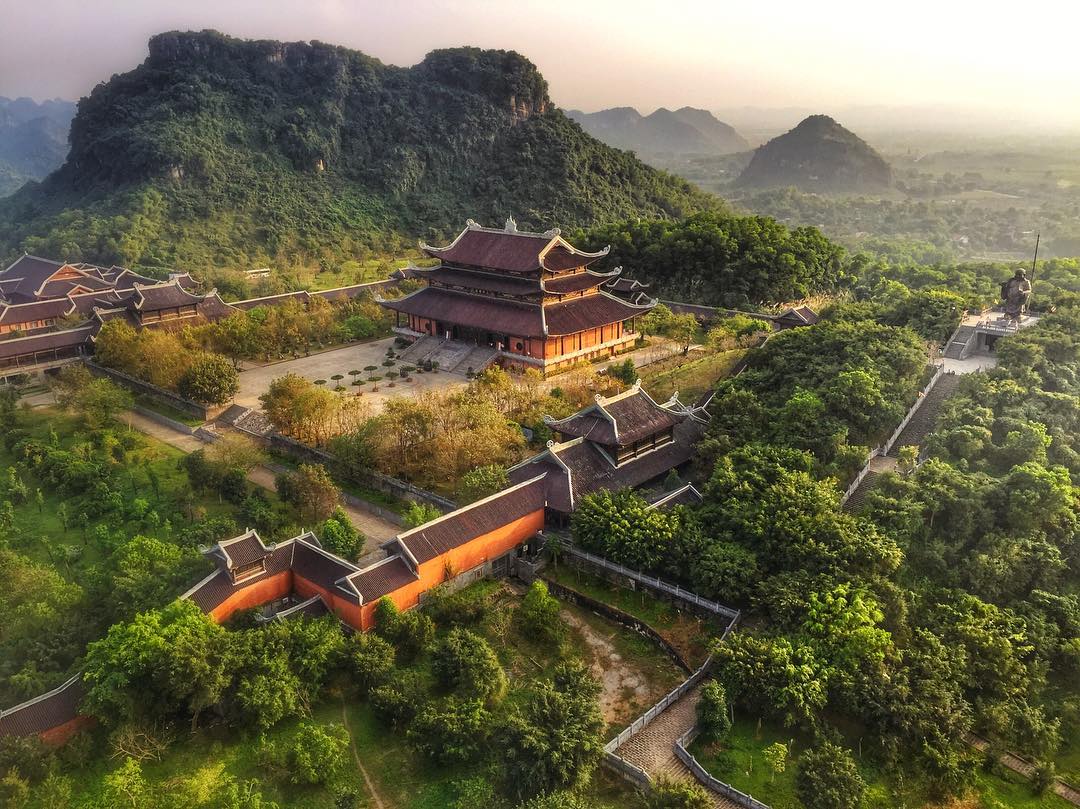
The total area of Bai Dinh Pagoda complex covers 539 hectares, including 27 hectares for the ancient Bai Dinh Pagoda, 80 hectares for the new Bai Dinh Pagoda, along with other ongoing construction projects.
Ancient Bai Dinh Pagoda and New Bai Dinh Pagoda
As mentioned earlier, Bai Dinh Pagoda underwent expansion and construction in 2005. The new architectural design of Bai Dinh Pagoda was led by architect Hoang Dao Kinh. The new section of the temple was funded and built by businessman Nguyen Van Truong (who is also the investor behind other major spiritual tourism projects such as Tam Chuc in Ha Nam, Nui Coc Lake in Thai Nguyen, and Cai Trap Island in Hai Phong).
After completion, the Bai Dinh Pagoda tourism complex is divided into two parts: the ancient Bai Dinh Pagoda, with its historical relics, and the new Bai Dinh Pagoda, constructed after 2005.
See more: Experience visiting Bich Dong Pagoda – Nam Thien De Nhi Dong in Ninh Binh
How old is Bai Dinh Pagoda, and who is it dedicated to?
Most tourists today visit Bai Dinh Pagoda after the addition of the new section, so not many are aware of its historical roots.
In reality, Bai Dinh Pagoda has a history of nearly 1000 years. According to historical records, Bai Dinh Pagoda was officially built in 1121 by the renowned Zen monk of the Ly dynasty, Nguyen Minh Khong. Prior to that, there were some worship sites in the area, such as the Cao Son shrine, but they had not been officially organized into a temple.
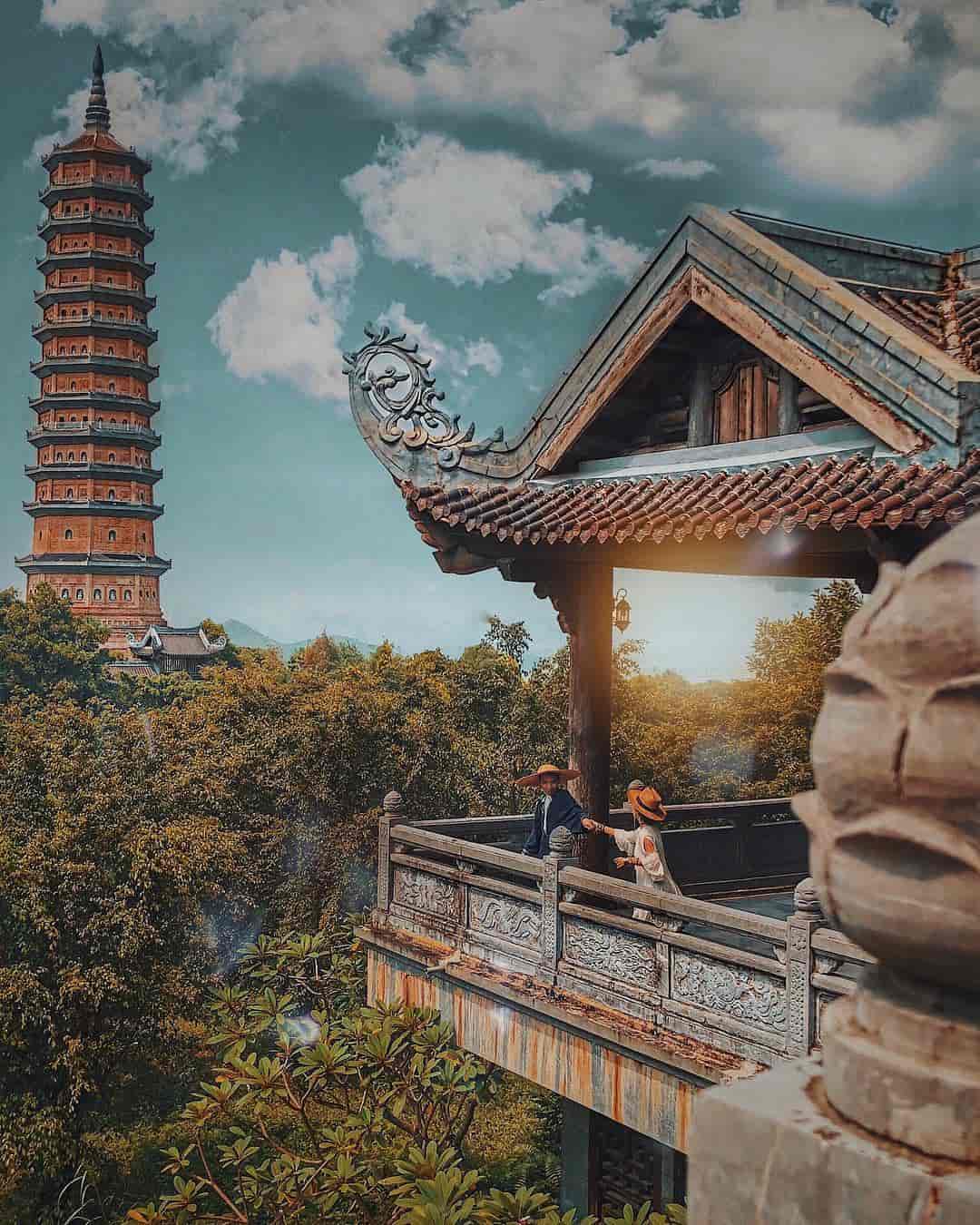
Thus, with nearly 1000 years of history, Bai Dinh Pagoda venerates deities like Cao Son, Zen monk Nguyen Minh Khong, Buddha, and the Heavenly Beings. Despite renovations and expansions in 2005, the core deities worshipped at Bai Dinh Pagoda have remained unchanged.
Festivals at Bai Dinh Pagoda
Like many other major temples, Bai Dinh Pagoda hosts unique festivals annually. The most prominent one is the spring festival, which begins on the 6th day of the Lunar New Year and lasts until the end of March. The festival consists of two main parts: the ceremonial rituals, including offering incense to worship Buddha, Saint Nguyen, and Cao Son, and the festive part, which includes traditional folk games, cheo (a form of traditional Vietnamese opera), and xam singing.
How large is Bai Dinh Pagoda?
One of the most common questions from visitors, given the numerous “firsts” in Ninh Binh, is “How large is Bai Dinh Pagoda?” The total area of the temple complex spans 539 hectares. This includes 27 hectares for the ancient temple and 80 hectares for the new temple, in addition to other structures and facilities.
How to Get to Bai Dinh Pagoda?
Bai Dinh Pagoda in Ninh Binh is approximately 96km south of Hanoi, and there are several ways to reach it from Hanoi. Here are some common methods of transportation that you can consider:
By Bus:
From Hanoi, you can take buses to Ninh Binh from Giap Bat Bus Station or My Dinh Bus Station. Buses depart approximately every 20 minutes, and the ticket price is around 70,000 to 80,000 VND per person. Upon arriving at Ninh Binh Bus Station, you can continue your journey to Bai Dinh Pagoda by taking a local bus or a taxi, which costs around 130,000 VND per trip.
By Motorcycle:
If you want to save on expenses and have more flexibility in your travel, you can ride a motorcycle to Ninh Binh. With this option, you can follow National Highway 1A to the city center and then follow the signs to reach Bai Dinh.
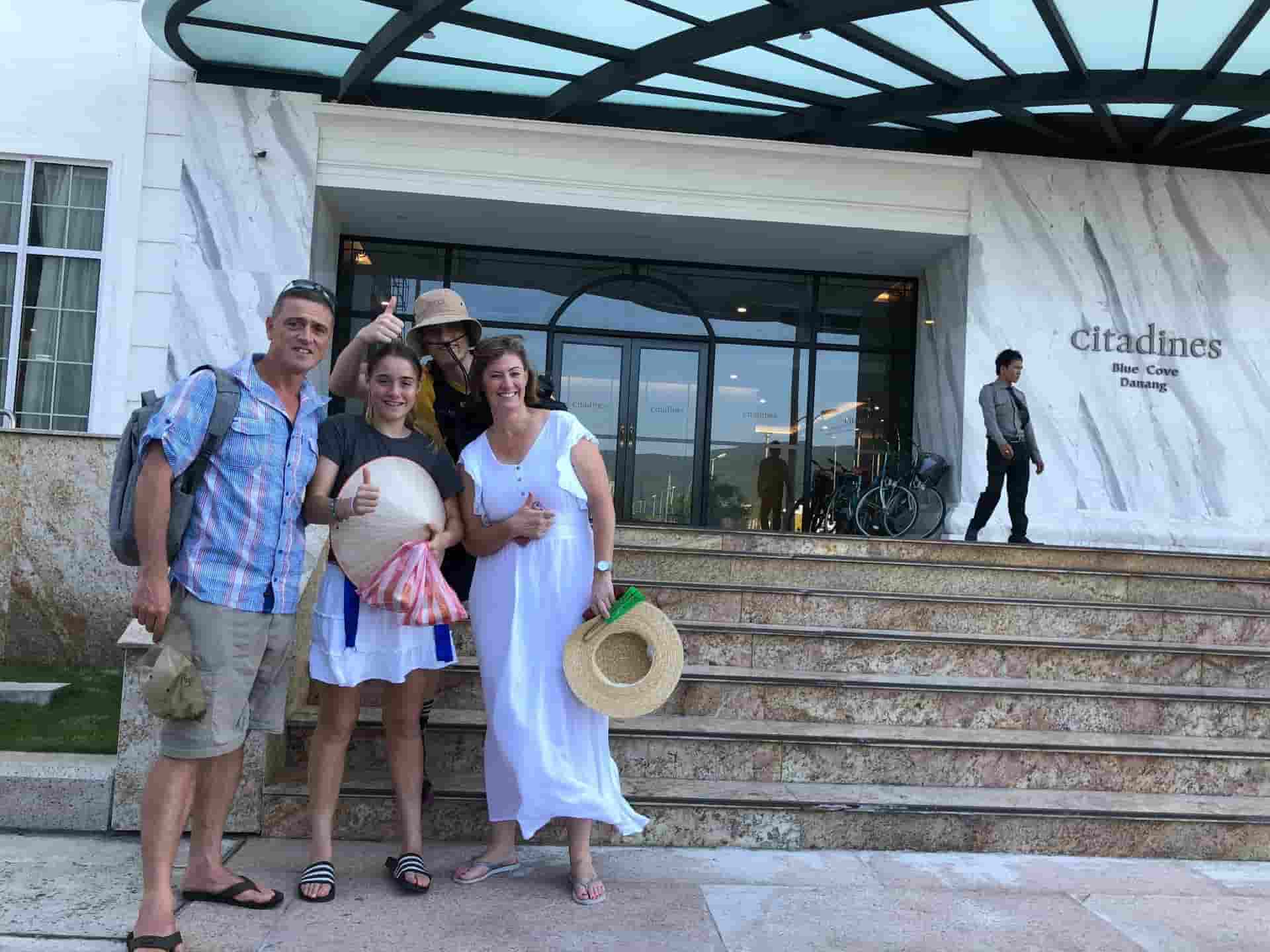
By Private Car with Driver:
Renting a private car with a driver in Hanoi from DanangPrivateCar.com’s can be a suitable option for groups of friends, families, and others. With our private car service, you’ll experience the utmost comfort, safety, and convenience. Our professional drivers will pick you up from anywhere in Hanoi, and on the way to Bai Dinh Pagoda, you can also visit other tourist destinations in Ninh Binh. Book your trip from Hanoi to Ninh Binh by Private Car today.
By Train:
Traveling to Bai Dinh by train is also an interesting experience. With this option, you can board a train from Hanoi and get off at Ninh Binh railway station. From there, you can take a local bus or taxi to reach Bai Dinh. The train ticket prices vary from 70,000 to 120,000 VND per person depending on the seating class.
Best Time to Visit Bai Dinh Pagoda
Every year, people often rush to visit the Bai Dinh Pagoda festival starting from the evening of the first day of the Lunar New Year. The festival officially opens on the 6th day of the Lunar New Year and lasts until the end of the third lunar month. According to Vietnamese customs, it’s common to visit temples to seek blessings during the New Year, which is why Bai Dinh, like other temples, attracts a large number of tourists during the spring season.
Therefore, it’s advisable to choose to visit Bai Dinh at the beginning of the year to fully enjoy the festive atmosphere of spring. However, this is also the peak tourist season for festivals, so visitors can expect crowds and congestion. If you prefer a more peaceful and less crowded experience, you can consider visiting Bai Dinh at other times of the year.
Ticket Prices for Bai Dinh Tourism
When you go on a tour to Bai Dinh, you will need to pay various small fees. Since the temple complex is quite extensive, it’s recommended to take an electric car to enter the temple area. The cost for an electric car ride is 30,000 VND per one-way trip, totaling 60,000 VND for a round trip.
Additionally, the service of hiring a tour guide for Bai Dinh Pagoda is 300,000 VND for both the new and old temples, and the ticket to ascend the Bai Dinh Pagoda Bell Tower is 50,000 VND.
The Most Famous Sightseeing Spots at Bai Dinh
As a famous tourist destination in Ninh Binh, Bai Dinh boasts a multitude of impressive sights. When visiting Bai Dinh Pagoda, prioritize exploring the following famous spots, each with fascinating and mysterious legends. For your convenience, Halotravel has divided these sights into two categories: the old temple area and the new temple area.
The Old Bai Dinh Temple Area
The Bai Dinh old temple complex includes structures built before 2005, during the Dinh, Early Le, and Ly dynasties.
The Shrine of Saint Nguyen Minh Khong
This architectural masterpiece is part of the Bai Dinh Pagoda complex and is designed in the “mountain-leaning river-view” style. Inside the shrine, there is a statue of the revered Zen master Nguyen Minh Khong. Legend has it that he once discovered a beautiful cave while searching for medicinal herbs for the king. Impressed by the cave’s natural beauty, he decided to build a temple to worship the Buddha there. He was not only a renowned herbalist who healed the people but also honored as the master of bronze casting.
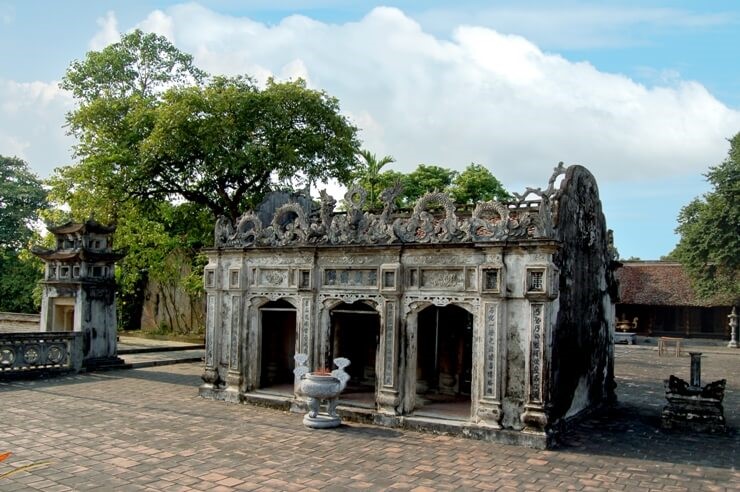
Morning Cave (Hang Sang) and Dark Cave (Dong Toi)
After climbing 300 steps to reach the Tam Quan gate, you will find a crossroads at the foot of the hill. This is where you can choose to visit Morning Cave and Dark Cave.
Morning Cave: This cave is dedicated to deities and Buddhas. It is named “Morning Cave” because it is naturally illuminated. At the entrance stand two imposing statues of deities with stern and fierce expressions, while deeper inside the cave, you will find a Buddha statue. The cave is about 25 meters deep, 15 meters wide, and over 2 meters high. At the end of the cave, you will reach the sacred shrine of Cao Son, a deity.
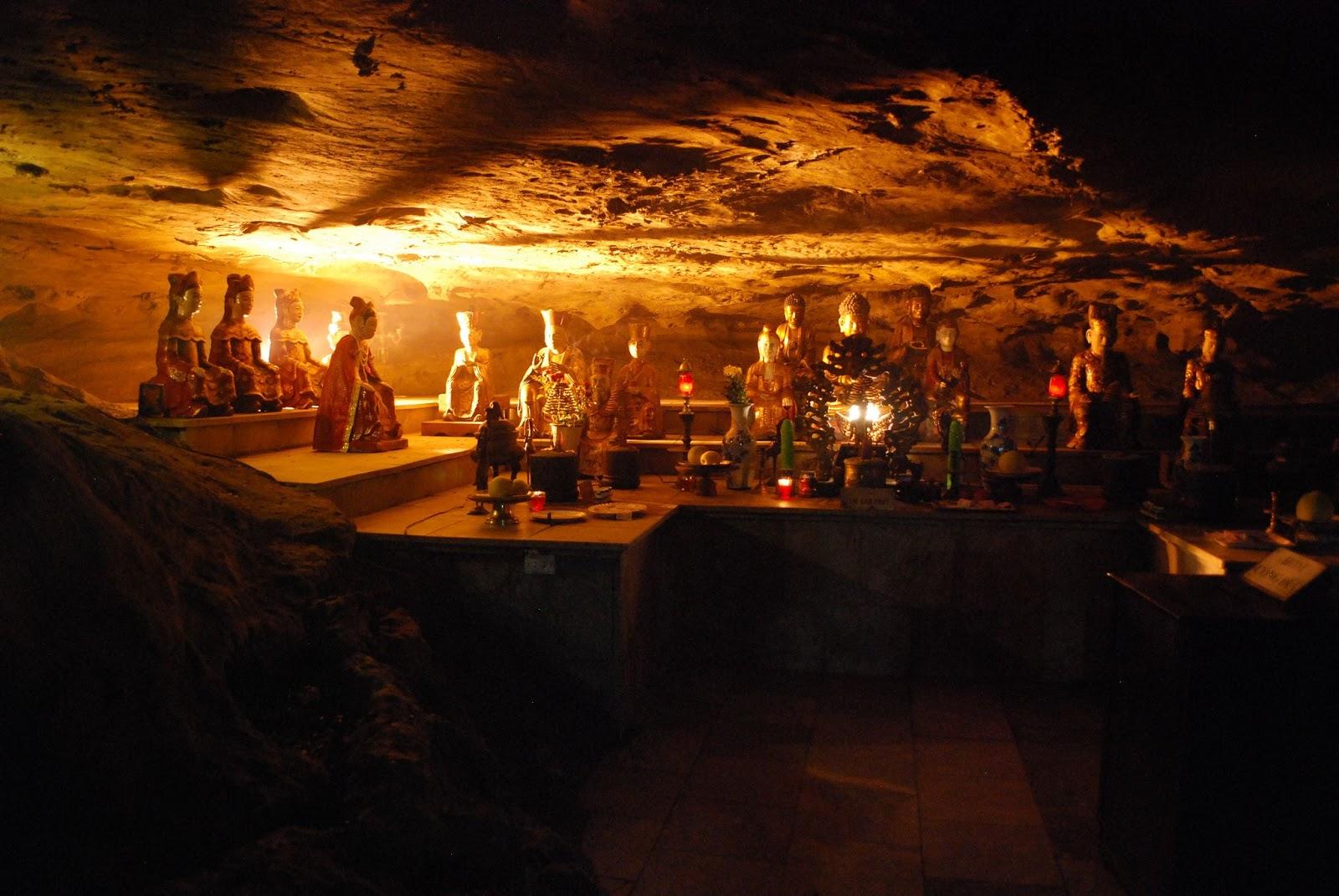
Dark Cave: Dark Cave is illuminated by an artistic lighting system, creating a surreal atmosphere. Above, the stone formations resemble the flow of underground rivers. The staircases along the path are vividly decorated with winding dragon motifs. In the center, there is a natural air-conditioning well. This area is dedicated to the worship of the Mother and celestial beings. Many statues are placed within stone niches, each with its own altar.
The Jade Well (Gieng Ngoc)
According to legend, the water in the Jade Well was used by Zen master Nguyen Minh Khong to make medicinal potions for the king and the people. You can admire the large stone railing surrounding the well, creating a grand circle. Standing at the temple’s edge, you can see the Jade Well, which stands out in the vast garden surrounded by lush trees. This well holds the record as the largest well in Vietnam with its jewel-like emerald-green water, making it a prominent feature of Bai Dinh Pagoda.
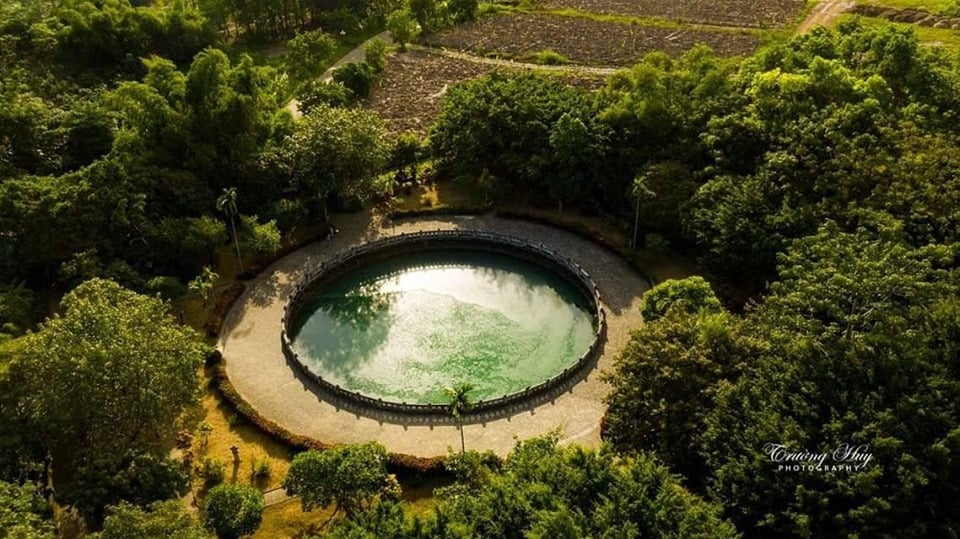
The Temple of Cao Son Deity
The Temple of Cao Son Deity is dedicated to the deity responsible for the Vu Lam mountainous region. According to ancient books, this was where Dinh Bo Linh lived as a child. The temple was built during the Dinh dynasty (968-980).
The New Bai Dinh Pagoda Area
The new Bai Dinh Pagoda has expanded to cover more than 80 hectares, and here are some of the famous landmarks to visit:
Bai Dinh Bell Tower (Thap Chuong Bai Dinh)
The Bell Tower is one of the renowned structures in the new Bai Dinh Pagoda complex. It is constructed using reinforced concrete that mimics the style of ancient bell towers. Hanging in the tower is a bronze bell weighing 36 tons, adorned with Han script and intricate dragon motifs. This bell tower is also home to the largest bell in Vietnam.
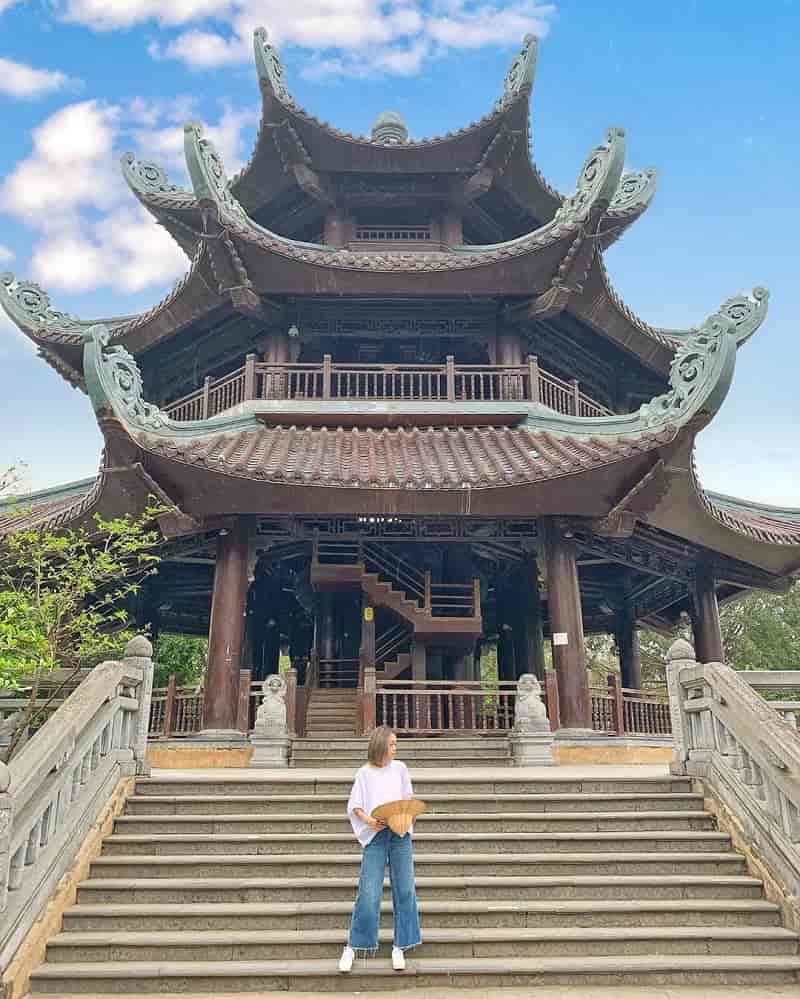
The Hall of Arhats (Hanh Lang La Han)
One of the places you should not miss when visiting Bai Dinh Pagoda is the Hall of Arhats. This hall consists of 234 connecting chambers that link the two ends of the Tam Quan gate. This structure stretches an impressive 1,052 meters and houses 500 statues of Arhats, each carved from solid green stone, weighing around 4 tons.
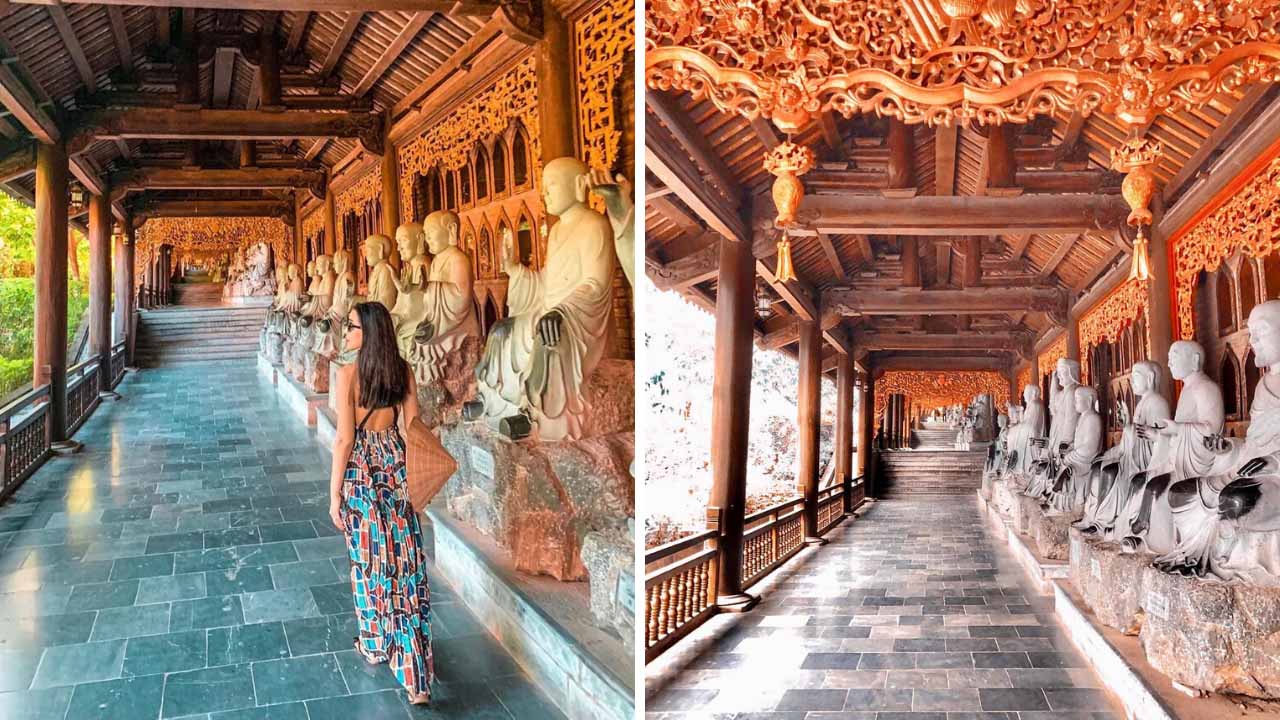
Walking along this hall, you’ll be able to admire the various poses and expressions of the Arhat statues, depicting life on Earth. As of now, the Hall of Arhats holds the record for being the longest Arhat hall in Asia.
The Quan Am Temple (Dien Quan Am)
The Quan Am Temple is dedicated to Quan The Am (Avalokiteshvara Bodhisattva). This temple consists of seven chambers, with the central chamber housing a statue of Quan The Am with a thousand arms and a thousand eyes, symbolizing her compassion for all beings. The temple features grand architecture adorned with Buddhist motifs such as lotus flowers and cranes. The most impressive feature is an 80-ton bronze statue of Buddha, standing 9.57 meters tall, recognized as the largest bronze statue of Quan The Am Bodhisattva in Vietnam.
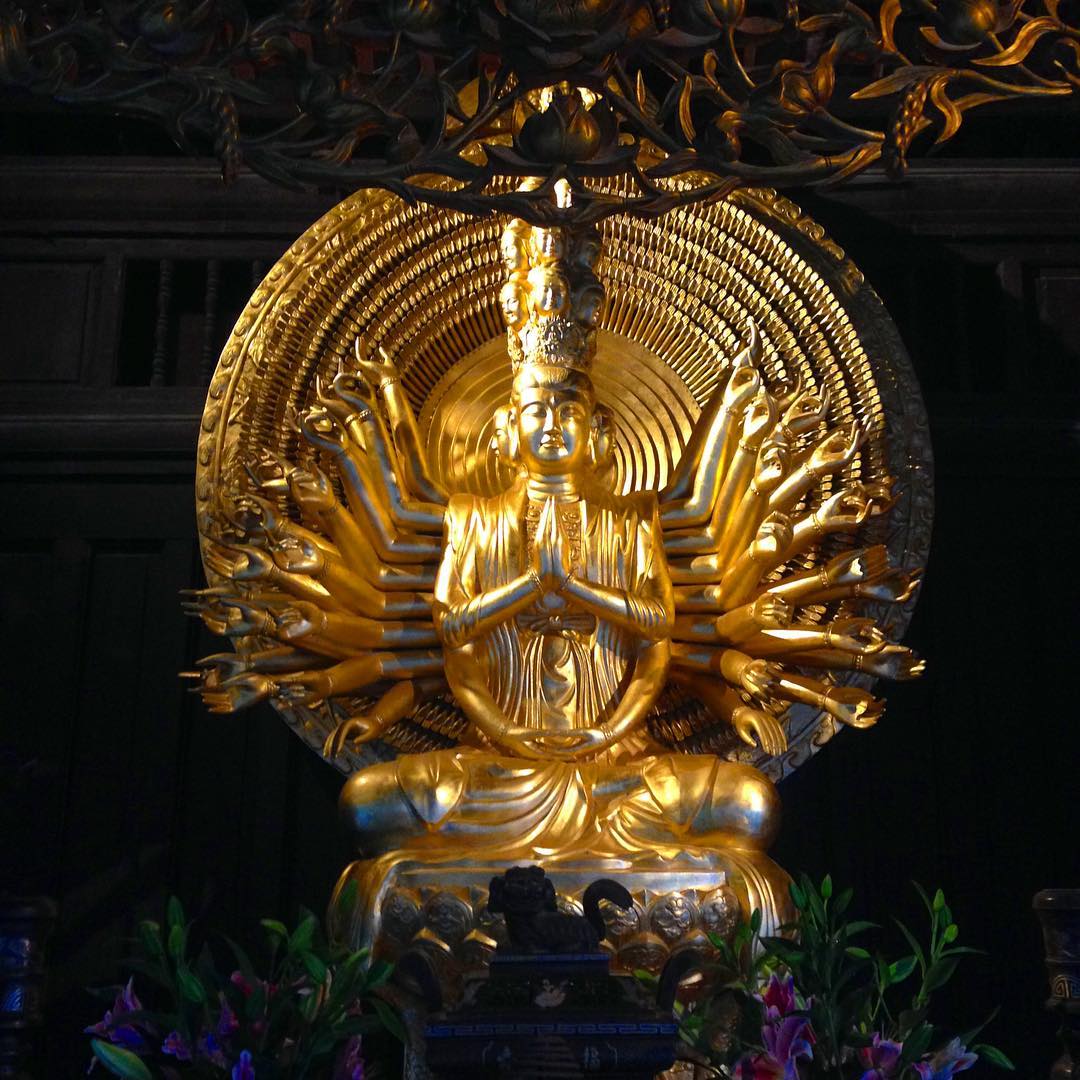
The Statue of Maitreya Buddha (Phat Di Lac)
When talking about the “largest” features of Bai Dinh Pagoda, one cannot forget the statue of Maitreya Buddha – the largest statue in Vietnam, weighing approximately 80 tons and standing 10 meters tall. This statue is located on a high hill, offering a panoramic view of Bai Dinh Pagoda from below, a truly beautiful sight.
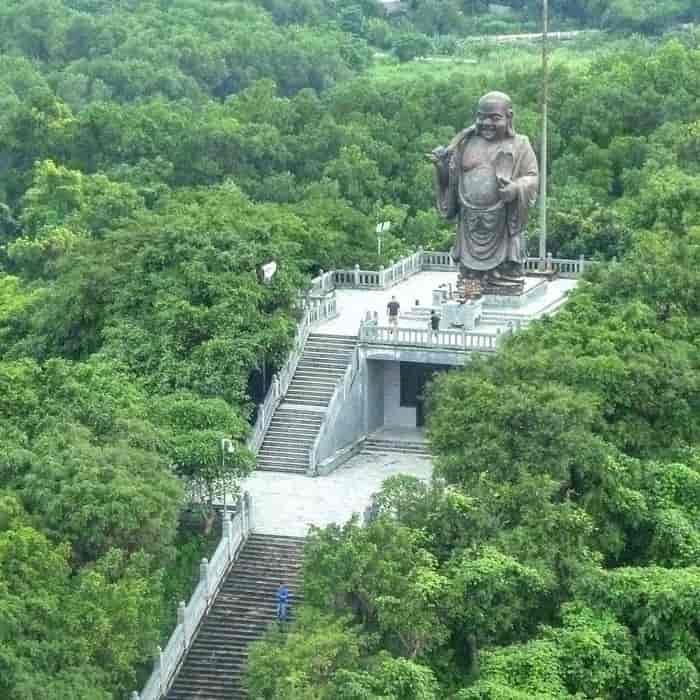
The Xa Loi Phat Tower (Thap Xa Loi Phat)
After walking through the Hall of Arhats and heading west from the Tam The Hall of Bai Dinh Pagoda, you will see the Bao Thap (Precious Tower) – the Xa Loi Phat Tower. This tower houses relics of the Buddha from India and Myanmar. The Bao Thap consists of 13 floors and stands at a height of 100 meters. Inside, there is an elevator with 72 climbing steps. This magnificent structure is recognized as the tallest Pagoda Tower in Southeast Asia.
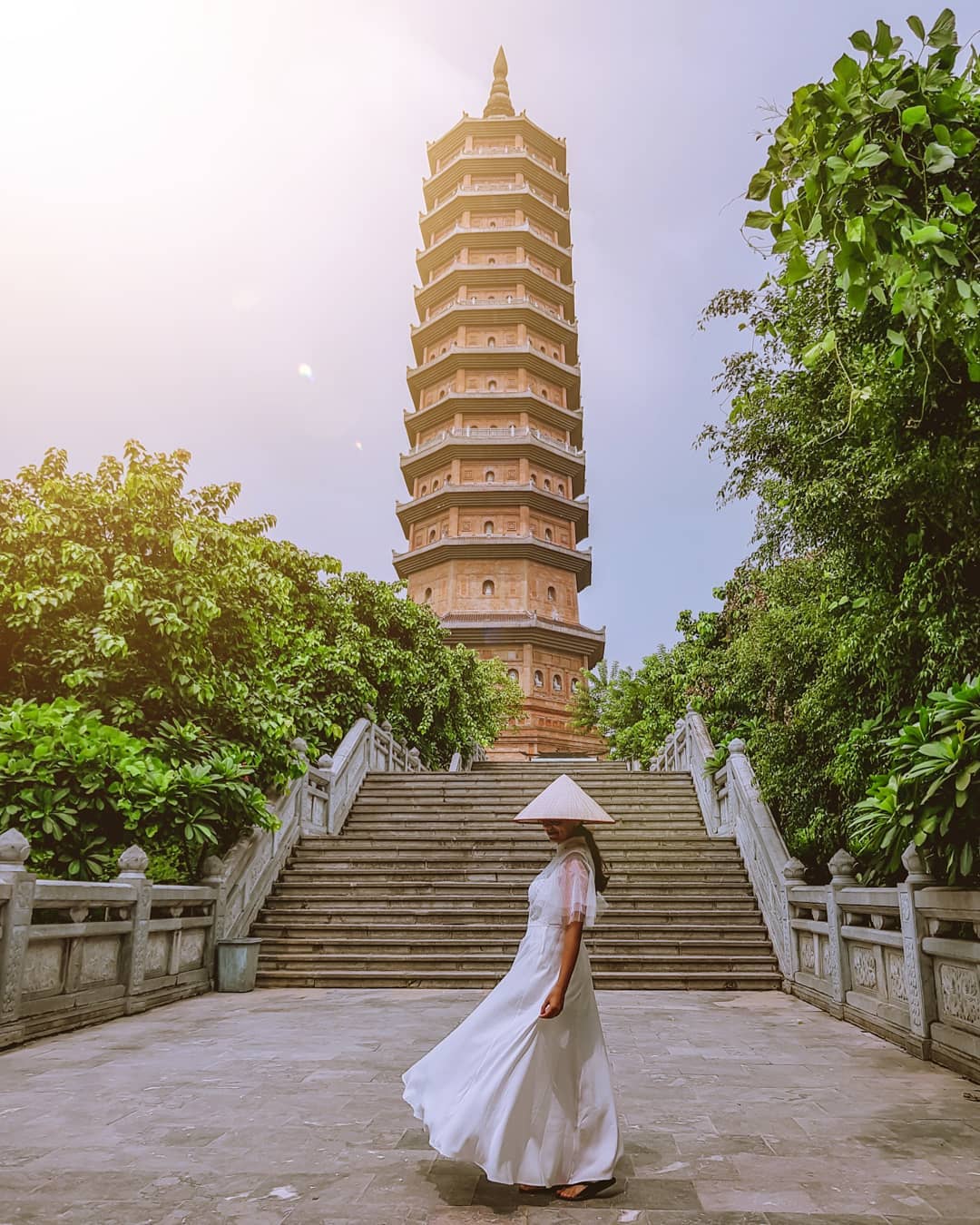
These are some of the prominent points of interest in the new Bai Dinh Pagoda area. In addition to these, Bai Dinh Pagoda has many other remarkable attractions such as Tam Quan Noi, Tam Quan Ngoai, Phat Ba Temple, the Liberation Pond, Bodhi Garden, memorial houses, and more.
Read more articles: Travel Experience in Thung Nham Bird Garden: Explore the “Kingdom of Birds” in Ninh Binh
What to Eat at Bai Dinh?
Based on the experiences of many visitors to Bai Dinh Pagoda, when you are here, you should not miss the delicious specialties of Ninh Binh. Some famous local dishes include those made with goat meat, crispy rice, eel noodles, mountain snails, and more. Here are a few recommendations for great dining spots near Bai Dinh Pagoda:
- Mien Luon Ba Phan: Located at 999 Tran Hung Dao, Thanh Binh, Ninh Binh, this restaurant is known for its eel noodle dishes.
- Luan Nhan Restaurant: Situated in Xom 4, Gia Sinh, Gia Vien, Ninh Binh, this restaurant offers a variety of local specialties.
- Thang Long Restaurant: Found in Trang An, Xa Truong Yen, Hoa Lu, Ninh Binh, Thang Long Restaurant serves delicious Vietnamese cuisine.
- Nha San Van Long Restaurant: Located in Xa Gia Van, Huyen Gia Vien, Gia Van, Gia Vien, Ninh Binh, this restaurant offers a unique dining experience in traditional stilt houses.
Suggestions for Accommodation When Visiting Bai Dinh.
Ninh Binh is one of the destinations that is increasingly thriving in tourism. Therefore, it is not difficult for you to choose an ideal place to stay during your visit here. Below are some accommodation suggestions for your reference when visiting Bai Dinh Pagoda:
Ninh Binh Hotels and Resorts.
Bai Dinh Hotel Ninh Binh
- Address: Bai Dinh Pagoda Complex, Gia Sinh Commune, Gia Vien District, Ninh Binh
- Room rates: Approximately 800,000 VND per night.
Ninh Binh Eco Garden
- Address: Hamlet 4, Gia Sinh Commune, Gia Vien District, Bai Dinh, Ninh Binh
- Room rates: Approximately 470,000 VND per night.
Bai Dinh Garden Resort & Spa Ninh Binh
- Address: Hamlet 5, Bai Dinh Pagoda Area, Gia Sinh Commune, Gia Vien District, Bai Dinh, Ninh Binh
- Room rates: Approximately 1,250,000 VND per night.
Homestays in Ninh Binh near Bai Dinh Pagoda.
Tam Family Homestay
- Address: Hamlet 5, Gia Sinh Commune, Gia Vien District, Bai Dinh, Ninh Binh
- Room rates: Approximately 200,000 VND per night.
Ninh Binh Family Homestay
- Address: Bai Dinh Pagoda, Hamlet 4, Gia Sinh Commune, Gia Vien District, Bai Dinh, Ninh Binh
- Room rates: Approximately 500,000 VND per night.
Ninh Binh Mountain Views Homestay
- Address: Hamlet 10, Gia Sinh Commune, Gia Vien District, Bai Dinh, Ninh Binh
- Room rates: Approximately 250,000 VND per night.
Some tourist attractions near Bai Dinh Pagoda include:
- Trang An Scenic Landscape Complex: Known for its stunning karst landscapes, boat rides, and cave exploration.
- Hoa Lu Ancient Capital: An ancient capital of Vietnam with historical and cultural significance.
- Tam Coc – Bich Dong: Famous for its scenic boat tours through rice paddies and limestone karsts.
- Phat Diem Cathedral: A unique Catholic cathedral blending Western and Vietnamese architectural styles.
- Van Long Nature Reserve: Home to diverse wildlife and beautiful landscapes, ideal for eco-tourism.
- Cuc Phuong National Park: Vietnam’s first national park, known for its biodiversity and nature trails.
These attractions offer a diverse range of experiences for visitors exploring the Ninh Binh region.
Some Useful Tips for Traveling to Bai Dinh Pagoda
Based on my experience visiting Bai Dinh Pagoda, I would like to share some tips with you:
- Wear comfortable sports shoes instead of high heels because you will be doing quite a bit of walking during your temple tour.
- If you want to buy souvenirs or gifts, it’s recommended to shop at the stalls located downhill rather than within the temple complex itself, as prices there can be quite high.
- Bring some small change with you for donations or to make offerings for good luck to yourself, your family, and friends.
- If you visit during the early spring, be prepared for occasional heavy drizzles. It’s a good idea to carry an umbrella with you.
Here are the experiences of visiting Bai Dinh Pagoda that VnCarRentals.com’s would like to share with you. Readers are encouraged to refer to and remember the most important points. It’s essential to have them handy during your trip. Wishing you a joyful and happy journey. See you in the upcoming articles.
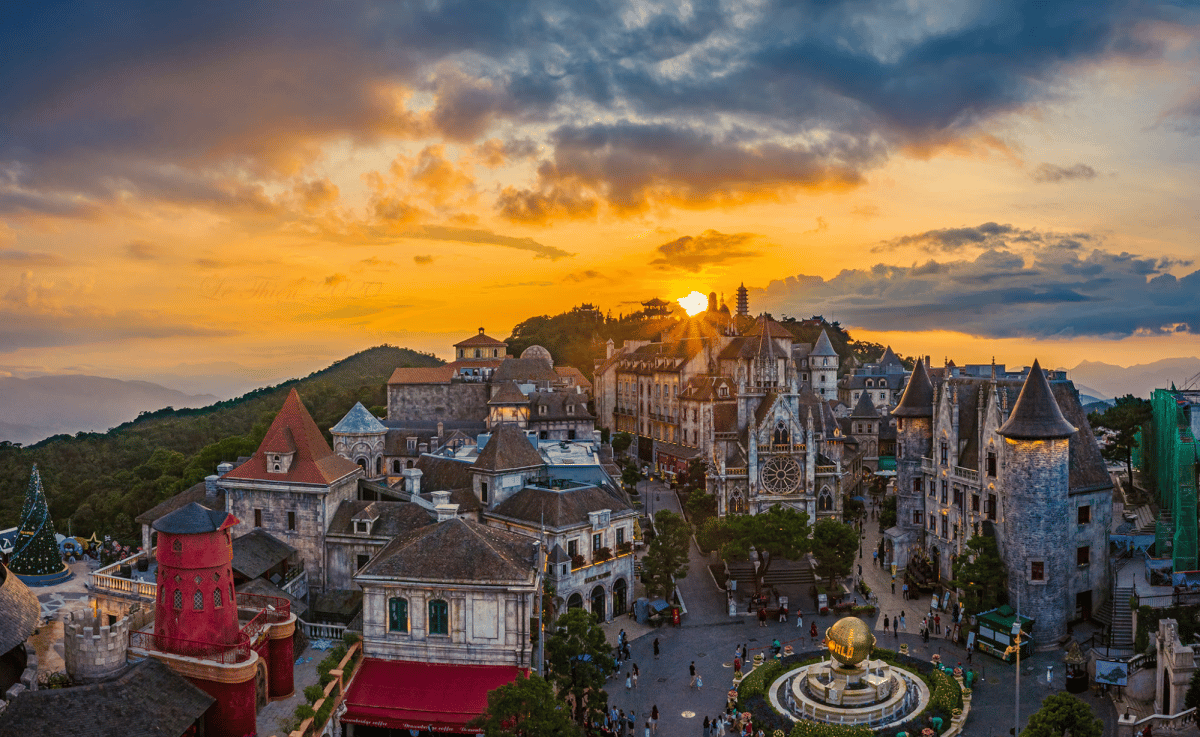

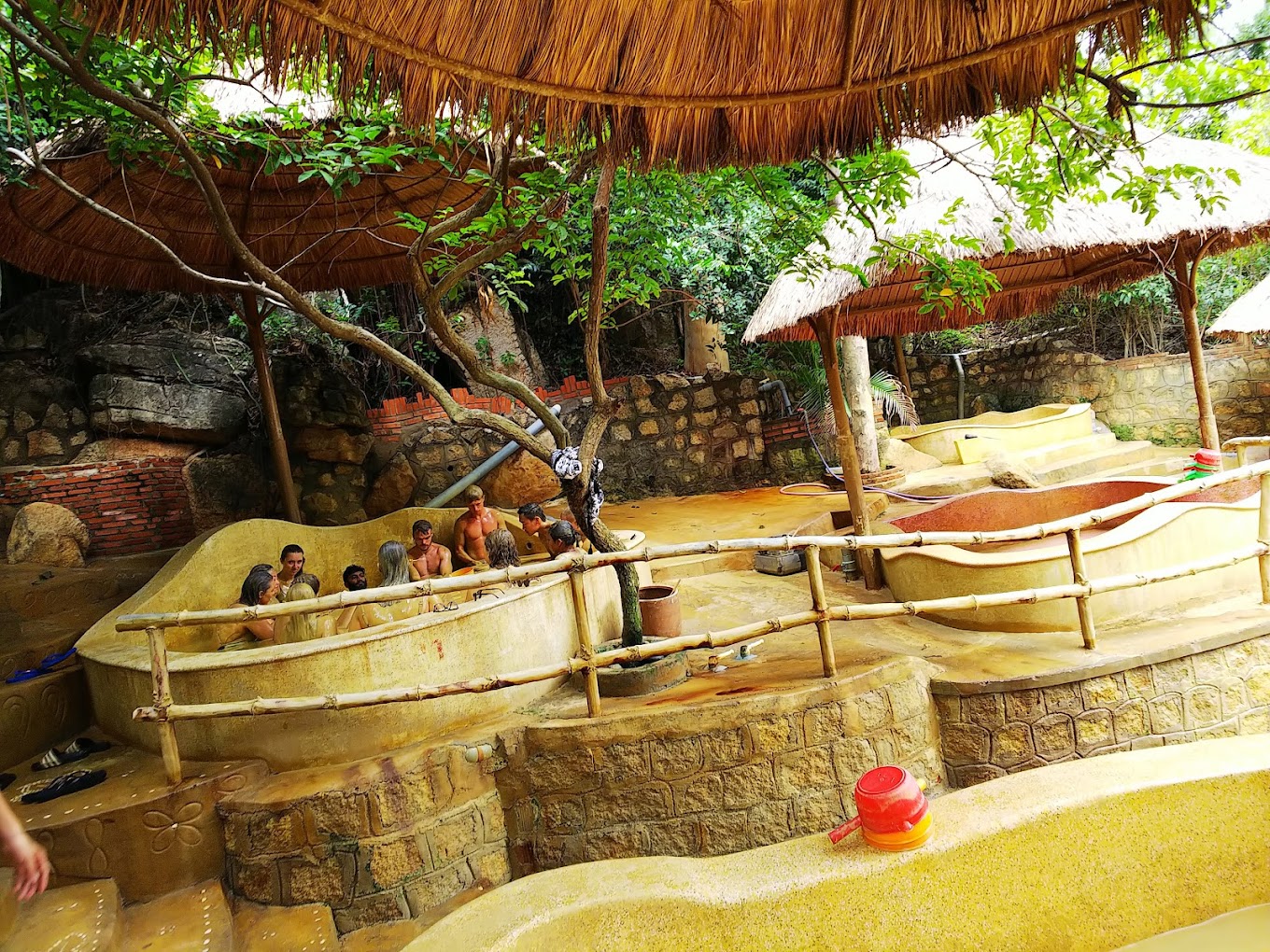
[…] Bai Dinh Pagoda (about 19 km away): Visit the majestic Bai Dinh Pagoda, one of the largest Buddhist complexes in Southeast Asia, featuring grand architecture and serene surroundings. […]
[…] 15 kilometers from Ninh Binh city, Bai Dinh Pagoda is the largest temple complex in Vietnam, boasting several established records. It includes the […]
[…] each year with famous landmarks on the S-shaped tourism map, such as Van Long Lagoon, Bai Dinh Pagoda, Tam Coc – Bich Dong, Mua Cave, Thung Nham Bird Garden, don’t miss a unique […]
[…] Ninh Binh is home to Bai Dinh Pagoda, the largest pagoda in Vietnam, so don’t miss the opportunity to visit the pagoda and light […]